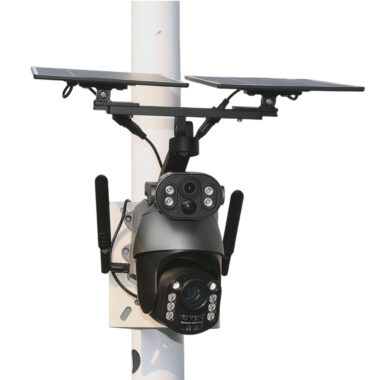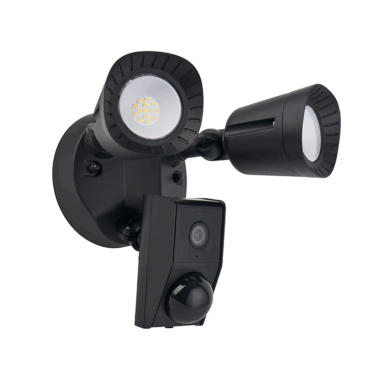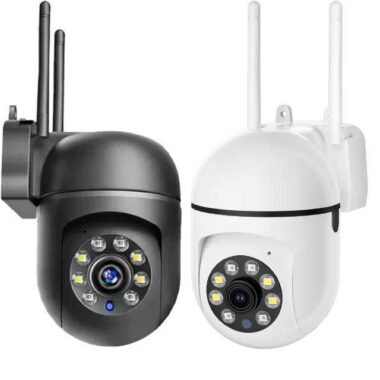🔹 Introduction
The global security industry is evolving rapidly, and so is the demand for custom CCTV cameras. For brands, distributors, and security solution providers, offering products that look unique, perform reliably, and align with your brand identity is crucial for differentiation.
Custom CCTV cameras are no longer limited to logo printing — modern CCTV camera factories can modify appearance, structure, internal hardware, firmware, and packaging to reflect your brand image. This guide explores how customization works and how you can build a unique CCTV product line from the ground up.
🧩 1. Define Your Target Market and Product Positioning
Before starting any customization, determine your target users. Are you selling to homeowners, business owners, or government contractors?
Your market defines your product features.
-
Home users: prefer compact WiFi cameras with mobile apps.
-
Commercial buyers: require PTZ, POE, or multi-camera systems.
-
Industrial projects: need rugged IP67-rated housings and long-range IR.
Once you know who your end users are, your manufacturer can tailor materials, lens options, and firmware to meet specific demands.
🏗️ 2. Choose the Right Housing and Material
The camera’s appearance is the first element that defines brand identity. Most factories offer both metal and ABS plastic housings, each suited to different markets:
-
Metal housings provide durability and a premium feel.
-
ABS plastic keeps the product lightweight and cost-effective.
You can also customize shape, surface finish (matte, glossy, brushed), and color tone to match your brand’s visual identity. Some clients even request distinctive design features like adjustable mounts or integrated solar panels.
🔧 3. Select Lens, Sensor, and Core Components
The internal hardware determines performance. A professional CCTV camera manufacturer offers multiple configurations:
-
Lens: 2.8mm for wide angle, 4mm–12mm for focused viewing.
-
Sensor: Sony, OmniVision, or SmartSens for high image quality.
-
Resolution: 2MP to 8MP depending on target segment.
-
Connectivity: WiFi, POE, or 4G for diverse applications.
Your factory should help balance image clarity, cost, and technical compatibility. The key is ensuring long-term component stability, especially for OEM projects.
🧠 4. Firmware and Smart Function Customization
Customization goes beyond appearance — the firmware is the camera’s brain.
A capable CCTV camera factory can modify:
-
Interface language and mobile app branding
-
Cloud storage options
-
AI functions (motion detection, human tracking, facial alerts)
-
Firmware compatibility with NVR or third-party platforms
OEM partners can even request unique app names or UI colors to match their brand. This level of integration gives your product an authentic and professional identity.
🎨 5. Logo, Label, and Packaging Design
Brand presentation matters as much as product performance. Professional suppliers provide logo printing, laser engraving, and customized labels.
Packaging can be tailored with your brand colors, taglines, and model details — ideal for retail or e-commerce.
Good packaging communicates quality before the product is even powered on. It also reinforces the connection between your product and brand promise, helping customers recognize your CCTV camera line instantly.
🧰 6. Request Samples and Refine the Design
Before mass production, request a fully branded sample. Evaluate not just the look but also assembly precision, video quality, and overall feel.
If any adjustments are needed — such as logo placement, paint tone, or firmware tweaks — communicate them before bulk confirmation.
Experienced factories appreciate this feedback stage. It ensures consistency between sample and production units, minimizing risk and saving time later.
🪜 7. Production, Quality Control, and After-Sales
After final confirmation, production begins. Reliable factories use:
-
SMT lines for stable electronic assembly
-
Aging tests (24–48 hours) for performance reliability
-
Waterproof and drop tests for durability
Post-production, verify that the CCTV camera manufacturer offers ongoing support: firmware updates, replacement policies, and technical training if needed. A professional partner values long-term collaboration, not just one-time transactions.
🔚 Conclusion
Building your own custom CCTV camera brand is more achievable than ever. With the right factory partner, you can transform standard cameras into products that express your brand’s design language and market positioning.
From material selection to firmware branding, each detail shapes your brand story. Working directly with a trusted CCTV camera factory gives you flexibility, reliability, and scalability — the three pillars of successful OEM manufacturing in today’s competitive security market.










